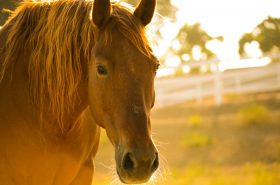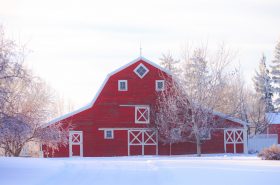Make sure you know the essentials to treating equine wounds!
Some horses are more accident prone than others. Even the calmest of horses can get a cut or scrap every once in a while. When dealing with wounds, you might encounter proud flesh. This red, lumpy tissue is an overgrowth. It covers the wound and can look unsightly. Luckily, there are ways to prevent and treat it!
Stages of a Wound
Inflammation usually appears with a new wound nearly immediately. The blood vessels constrict to prevent bleeding. This is followed by platelets developing in the area to form a clot. Your horse’s wound may be red, swollen, and hot to the touch.
After a few hours, new cells form over the top. Healthy granulation tissue is a light pink color. Unfortunately, horses tend to develop too much of this tissue. If healing correctly, the edges of the wound contract and skin covers the area.
What is Proud Flesh?
It’s an overgrowth of granulation tissue. Proud flesh most frequently appears on the lower leg beneath the horse’s knees and hocks. The skin in this area is constantly being pulled as the horse moves. This makes it difficult for the wound to close and heal.
Granulation tissue is the first sign of healing. After this step, skin will grow overtop by starting at the edges and developing to the center. With frequent movement, the skin isn’t able to form rather more granulation tissue develops.
How to Prevent Proud Flesh
Ideally, the cut is in an area that can be sutured. Suturing almost always prevents the growth of proud flesh. Your veterinarian should suture the wound as soon as possible for minimal scarring. In certain areas like the lower legs, the skin is too right to suture. For these wounds, you may use a bandage or cast to prevent movement.
It can be very difficult to prevent proud flesh. Some tips include keeping the area clean and moist. Many people have had success with Manuka honey and Intrasite Gel. Avoid the use of clays and poultices, as they can dry out the wound. It’s also important that the wound doesn’t become infected.
Treatment
If you have noticed proud flesh beginning to form, then it should be cut back until the wound is level with the skin. This may need to be done in stages if the granulation tissue has become massive. Luckily, the tissue doesn’t have nerves, but you should expect a lot of blood. The skin around the wound will be painful though, so sedation may be necessary. The sooner you take care of it the better!
A steroid ointment is often prescribed by your veterinarian to prevent the regrowth of this tissue. The healing of these wounds can be lengthy from a few weeks to many months. In the end, your horse may still have a scar.
The faster you address a wound the better! Monitor it carefully and stop proud flesh before it grows out of control. With careful management, you can reduce your horse’s scar.



